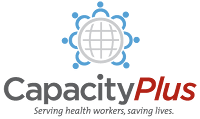Gender Issues
Integration of Gender-Transformative Interventions into Health Professional Education Reform for the 21st century: Implications of an Expert Review
The paper’s broad aim is to encourage HPE [Health Professional education] leaders to make gender-transformative reforms in the current way of doing business and commit to themselves to countering gender discrimination and inequality. Interventions to counter gender discrimination should be seen as integral parts of institutional and instructional reforms and essential investments to scale up quality HPE and recruit and retain health workers in the systems that educate and employ them. Implementation challenges spanning financial, informational, and cultural barriers need consideration.
- 886 reads
Gender and Health: Awareness, analysis and Action: A Virtual Course
The purpose of this course is to provide PAHO/WHO staff with basic skills on gender mainstreaming in health. The elearning builds familiarity with how gender operates as a determinant of health, guides guides participants through basic steps of applying gender responsive planning to their work, and introduces the basic skills to integrate gender concerns into public health practice.
- 602 reads
mHealth and Gender: Making the Connection
The use of mHealth interventions withinin health systems research is increasing, with few taking into account the connections between gender and mHealth. This policy brief attempts to fill this gap by exploring key connections between mHealth and gender that need to be taken into account when conducting or implementing mHealth research and interventions.
- 603 reads
The Invisible Economy and Gender Inequalities: The Importance of Measuring and Valuing Unpaid Work
Unpaid health and child care provided in the household, along with other activities that contribute to the physical, cognitive, and emotional development of members of a household, have a major impact on individual and public well-being, as well as on the human development potential of the countries. These economic activities, performed largely by women, take place outside the market and are therefore invisible in the economic statistics and national accounts systems of most countries. [from abstract]
- 688 reads
Family Planning 2011: Better Use of Existing Methods, New Strategies and More Informed Choices for Female Contraception
This paper explores recent developments in female contraception, using them to illustrate how adaptation of existing methods, improved service delivery and understanding contraceptive behaviour might increase contraceptive uptake and correct and consistent use, and how the development of new methods holds some promise for capitalizing on the potential non-contraceptive benefits. [from abstract]
- 595 reads
Health Systems and Gender in Post-Conflict Contexts: Building Back Better?
As part of a larger research project that explores whether and how gender equity considerations are taken into account in the reconstruction and reform of health systems in conflict-affected and post conflict countries, we undertook a narrative literature review based on the questions “How gender sensitive is the reconstruction and reform of health systems in post conflict countries, and what factors need to be taken into consideration to build a gender equitable health system?” We used the World Health Organisation’s (WHO) six building blocks as a framework for our analysis; these six b
- 594 reads
Transforming Gender Norms, Roles, and Power Dynamics for Better Health: Gender-integrated Programs Reference Document
This review presents evidence showing how gender-integrated programming influences health outcomes
in low- and middle-income countries: in particular, reproductive, maternal, neonatal, child, and adolescent
health (RMNCH+A); HIV prevention and AIDS response; gender-based violence (GBV); tuberculosis
(TB); and universal health coverage (UHC).
Please find the link to the Transforming Gender Norms, Roles, and Power Dynamics for Better Health: Evidence from a Systematic Review of Gender-integrated Health Programs in Low- and Middle-Income Countries:
- 517 reads
Transforming Gender Norms, Roles, and Power Dynamics for Better Health: Evidence from a Systematic Review of Gender-integrated Health Programs in Low- and Middle-Income Countries
This review presents evidence showing how gender-integrated programming influences health outcomes in low- and middle-income countries: in particular, reproductive, maternal, neonatal, child, and adolescent health; HIV prevention and AIDS response; gender-based violence; tuberculosis; and universal health coverage.[from abstract]
Please find the link to the Transforming Gender Norms, Roles, and Power Dynamics for Better Health: Gender-integrated Programs Reference Document: http://www.hrhresourcecenter.org/node/6086
- 563 reads
Effect of Nursing Educational Guidelines on Women’s Awareness, Health Practices and Beliefs Regarding Prevention and Early Detection of Breast and Cervical Cancer
To evaluate the effect of nursing educational guidelines on women’s awareness, health practices and beliefs regarding the prevention and early detection of breast and cervical cancer. [from abstract]
- 760 reads
HIV Prevention for Women in Kenya: An Advocacy Guide for Gender-Sensitive Microbicide Introduction
This document is a guide for advocating for attention to gender issues in future microbicide introduction. The guide is based on the findings from a gender analysis conducted by FHI 360 in Kenya in 2012–2013. The purpose of this analysis was to examine how gender norms and inequalities may affect women’s access to and use of a microbicide product. [from introduction]
- 723 reads
A Pocket Guide to Thinking About Gender & Vaginal Microbicides in South Africa
This pocket card, created with input from the South African National AIDS Council (SANAC) Men’s and Women’s Sectors, is designed to build support for a gender-integrated microbicides rollout among both community members and policy makers. [from introduction]
- 563 reads
Why We Must Provide Better Support for Pakistan's Female Frontline Health Workers
This article summarizes the key role that lady health workers play in polio eradication; outlines the problems faced by these workers such as the risk to their lives through shootings and bombings, the lack of a living wage and dearth of advancement opportunities; and offers suggestions to improve the situation.
- 873 reads
Knowledge, Attitudes and Practices of Female Genital Mutilation/Cutting among Health Care Professionals in the Gambia: A Multi-Ethnic Study
Health care professionals are expected to be aware of how to identify and manage the consequences of female genital mutilation in order to ensure that those affected by the practice receive quality health care, and their integration and legitimacy within the communities allow them to play a key role in the prevention of the practice. This study sought to examine the knowledge, attitudes, and practices regarding female genital mutilation among health workers in rural settings in Gambia. [adapted from abstract]
- 853 reads
Role of Social Geography on Lady Health Workers' Mobility and Effectiveness in Pakistan
This study explores whether and how socio-cultural factors such as influence of gendered norms and extended family relationships impact lady health workers’ home-visit rates. [adapted from abstract]
- 766 reads
Women in the Rural Medical Academic Workforce
This study assessed the role of women as fractional full-time equivalent rural academics in the context of significant health workforce shortage and increasing academic demand and concluded that female doctors who are willing to take on part-time work are supporting the rural medical teaching workforce. [adapted from abstract]
- 687 reads
Provider Bias or Organizational Limitations? Female and Male Health Care Workers' Interaction with Men in Reproductive Health Programmes in Rural Central India
This article examines the extent, motivation, and prevalence of village level health workers’ interaction with men concerning reproductive health issues in rural central India. [from author]
- 602 reads
Gender Guide to Reproductive Health Publications: Producing Gender-Sensitive Publications for Health Professionals
The main goal of reproductive health publications is to advance reproductive health outcomes. However, with this guidance, health professional staff also can learn to incorporate gender perspectives into every stage of the publication process and thus ensure that women and men in the audience receive and understand the information they need. [adapted from author]
- 548 reads
Gender-based Distributional Skewness of the United Republic of Tanzania's Health Workforce Cadres: A Cross-Sectional Health Facility Survey
This paper assesses the gender-based distribution of the United Republic of Tanzania’s health workforce cadres. [from abstract]
- 566 reads
Gender and Social Geography: Impact on Lady Health Workers Mobility in Pakistan
In Pakistan, where gendered norms restrict women’s mobility, female community health workers (CHWs) provide doorstep primary health services to home-bound women. This study aims to understand how these cultural norms affect CHWs’ home-visit rates and the quality of services delivered. [from abstract]
- 878 reads
Differences in Wage Rates for Males and Females in the Health Sector: A Consideration of Unpaid Overtime to Decompose the Gender Wage Gap
The negative impact of gender wage differentials is the disincentive to work more hours. This implies a substantial cost on the Australian health sector. This study aimed to identify the magnitude of gender wage differentials within the health sector. [from abstract]
- 715 reads
Transforming the Health Worker Pipeline: Interventions to Eliminate Gender Discrimination in Preservice Education
This report describes the results of a systematic and expert review undertaken to identify practices that have the potential to counter forms of gender discrimination against students and faculty in preservice education institutions. [from publisher]
- 724 reads
Strengthening the Health Worker Pipeline through Gender-Transformative Strategies
This technical brief provides an overview of how gender discrimination affects health professional students and faculty as well as intervention options that the expert panel identified as having potential to counter gender discrimination. In addition, it offers recommendations for preservice education institutions and other stakeholders to address these challenges. [from publisher]
- 782 reads
Patient's Silence towards the Healthcare System after Ethical Transgressions by Staff: Associations with Patient Characteristics in a Cross-Sectional Study among Swedish Female Patients
The objective of this study was to identify which patient characteristics are associated with silence towards the healthcare system after experiences of abusive or ethically wrongful transgressive behaviour by healthcare staff. [from abstract]
- 846 reads
Foundations of Gender Equality in the Health Workforce
This free online course is available in English and French and is intended to expose the participant to basic concepts, issues, and standards related to gender equality in the health workforce. [from publisher]
- 1148 reads
Developing Lay Health Worker Policy in South Africa: A Qualitative Study
The aim of this study was to explore contemporary lay health worker policy development processes and the extent to which issues of gender are taken up within this process. [from abstract]
- 1095 reads
Gender Equality in Human Resources for Health: What Does This Mean and What Can We Do?
This paper discusses the meaning of gender equality in the context of human resources for health, and offers practical ways to address it. [from publisher]
- 1595 reads
Access to Non-Pecuniary Benefits: Does Gender Matter? Evidence from Six Low- and Middle-Income Countries
There is an accumulating body of evidence on gender differences in health workers’ employment patterns and pay, but inequalities in access to non-pecuniary benefits between men and women have received little attention. This study investigates empirically whether gender differences can be observed in health workers’ access to non-pecuniary benefits across six low- and middle-income countries. [from abstract]
- 2807 reads
Global Strategy to Stop Health-Care Providers from Performing Female Genital Mutilation
This strategy document introduces the issue of female genital mutilation (FGM) as it relates to health workers, the scale of the problem in the medical field, challenges to be addressed concerning medicalization of FGM, and strategies to accelerate progress from health care providers and national authorities. [adapted from author]
- 1601 reads
Work Related Characteristics, Work-Home and Home-Work Interference and Burnout among Primary Healthcare Physicians: a Gender Perspective in a Serbian Context
This study examined work related characteristics, work-home and home-work interference and burnout among Serbian primary healthcare physicians and compared burnout levels with other medical doctors in European Union countries. [from abstract]
- 2495 reads
Workplace Violence and Gender Discrimination in Rwanda's Health Workforce: Increasing Safety and Gender Equality
This article reexamines a set of study findings that directly relate to the influence of gender on workplace violence, synthesizes these findings with other research from Rwanda, and examines the subsequent impact of the study on Rwanda’s policy environment. [from abstract]
- 4918 reads




